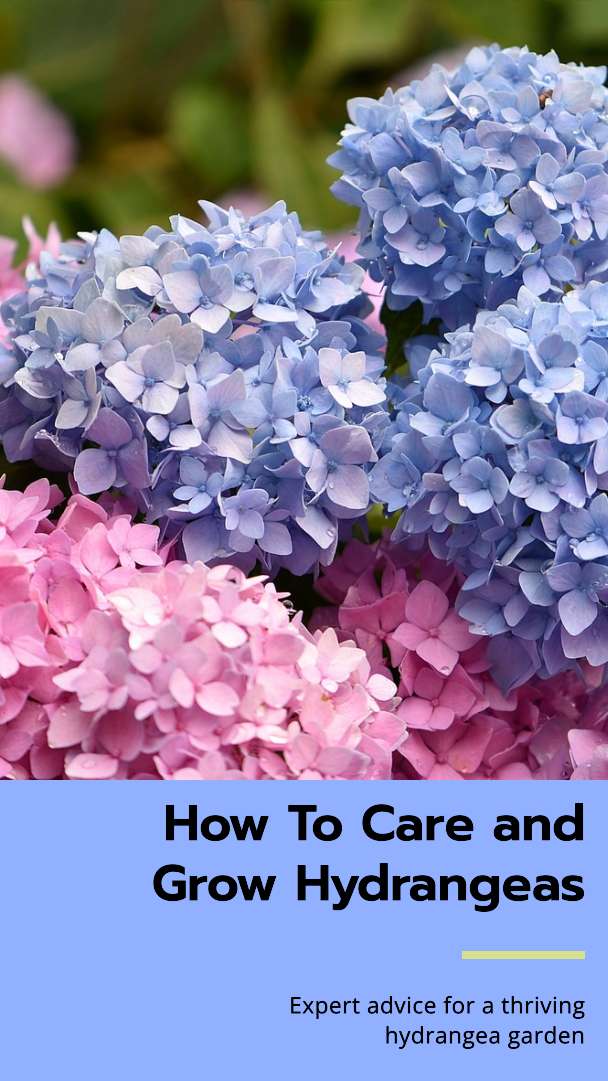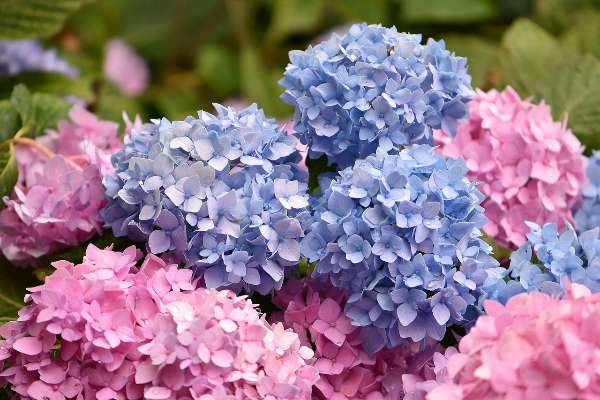How To Care and Grow Hydrangeas

Hydrangeas, with their mesmerizing clusters of vibrant blooms, hold a special place in the hearts of gardeners worldwide. Their beauty is undeniable, but behind their enchanting allure lies a delicate balance of care and cultivation.
Whether you’re a novice gardener or a seasoned horticulturist, mastering the art of growing hydrangeas can elevate your garden to new heights of splendor. In this comprehensive guide, we delve into every aspect of nurturing these beloved blooms, from propagation to problem-solving.
Selecting the Perfect Hydrangeas:
Before delving into the intricacies of hydrangea care, it’s crucial to choose the right variety for your garden. With a multitude of species and cultivars available, selecting the perfect hydrangea can seem daunting. Here are some popular types to consider:
- Bigleaf Hydrangeas (Hydrangea macrophylla): Known for their large, showy blooms, bigleaf hydrangeas thrive in partially shaded areas and prefer moist, well-drained soil. Varieties such as ‘Nikko Blue’ and ‘Endless Summer’ are cherished for their prolific flowering.
- Panicle Hydrangeas (Hydrangea paniculata): These hardy hydrangeas boast cone-shaped flower clusters that evolve from creamy white to blush pink as they mature. They thrive in full sun to partial shade and are relatively low-maintenance.
- Smooth Hydrangeas (Hydrangea arborescens): Renowned for their robustness, smooth hydrangeas are tolerant of various soil types and excel in full sun to partial shade. ‘Annabelle’ is a popular cultivar celebrated for its massive, snowball-like blooms.

Where to Cultivate Hydrangeas:
Hydrangeas are versatile plants that can thrive in a range of environments, but optimal growing conditions are essential for abundant blooms. Here’s what you need to know:
- Sunlight: Most hydrangeas prefer dappled sunlight or partial shade, especially during the hottest parts of the day. However, some varieties, like panicle hydrangeas, can tolerate more sunlight.
- Soil: Hydrangeas thrive in well-draining, fertile soil with a slightly acidic pH. Amending the soil with organic matter, such as compost or peat moss, can improve drainage and soil texture.
- Watering: Consistent moisture is key to hydrangea health. Ensure plants receive adequate water, especially during dry spells, but avoid waterlogged conditions, which can lead to root rot.
Caring for Your Hydrangeas:
Once you’ve established your hydrangeas in the ideal location, proper care is crucial for maintaining their health and promoting robust growth. Here’s a breakdown of essential care practices:
- Watering: Hydrangeas have shallow roots, so regular watering is essential, particularly during the growing season. Aim to keep the soil consistently moist but not waterlogged.
- Fertilization: Apply a balanced, slow-release fertilizer in spring to encourage healthy growth and abundant blooms. Avoid high-nitrogen fertilizers, as they can promote excessive foliage growth at the expense of flowers.
- Mulching: A layer of organic mulch, such as shredded bark or compost, helps retain moisture, suppress weeds, and regulate soil temperature. Apply mulch around the base of the plant, leaving a few inches of space around the stems to prevent rot.
Pruning Hydrangeas:
Pruning hydrangeas can seem intimidating, but with the right knowledge, it’s a straightforward process. Here’s a general guide to pruning different types of hydrangeas:
View this post on Instagram
- Bigleaf and Smooth Hydrangeas: Prune these varieties immediately after flowering, as they bloom on old wood. Remove dead or weak stems and trim back any overgrown branches to maintain a tidy shape.
- Panicle and Oakleaf Hydrangeas: These varieties bloom on new wood, so they can be pruned in late winter or early spring before new growth emerges. Remove dead or damaged wood and thin out crowded branches to improve airflow and light penetration.
View this post on Instagram
Propagating Hydrangeas:
Propagating hydrangeas is an excellent way to expand your garden or share plants with friends and family. Here are two common methods of propagation:
- Taking Cuttings: Select healthy, non-flowering stems in late spring or early summer and cut them just below a leaf node. Remove the lower leaves and dip the cut end in rooting hormone before planting in a well-draining growing medium.
- Dividing Plants: Some hydrangeas, such as panicle and smooth hydrangeas, can be divided in early spring before new growth begins. Carefully dig up the plant and separate the root ball into sections, making sure each division has ample roots and stems.
View this post on Instagram
Common Hydrangea Problems and Solutions:
Despite their resilience, hydrangeas can encounter various issues, from pests to diseases. Here are some common problems and how to address them:
- Powdery Mildew: This fungal disease manifests as a white, powdery coating on leaves and stems. Improve air circulation around plants, avoid overhead watering, and apply fungicidal sprays as needed.
- Aphids: These tiny insects feed on the sap of hydrangea leaves, causing distortion and yellowing. Blast aphids off plants with a strong stream of water or apply insecticidal soap to control infestations.
- Bud Blight: Bud blight can cause flower buds to turn brown and fail to open. Ensure plants receive adequate water and avoid overhead watering, which can promote fungal diseases.
Best Hydrangeas to Grow and Why:
Choosing the best hydrangea for your garden depends on various factors, including your climate, soil conditions, and aesthetic preferences. However, some hydrangeas stand out for their exceptional performance and ornamental appeal:
View this post on Instagram
- ‘Endless Summer’ Hydrangea: This cultivar is prized for its ability to bloom on both old and new wood, resulting in an extended flowering season. It’s perfect for gardeners seeking continuous blooms throughout the summer.
- ‘Limelight’ Hydrangea: With its striking lime-green blooms that mature to creamy white, ‘Limelight’ adds a refreshing burst of color to the garden. It’s also valued for its vigorous growth habit and strong stems that support heavy flower clusters.
In conclusion, cultivating hydrangeas is a rewarding endeavor that offers endless beauty and joy. By understanding their unique requirements and following proper care practices, you can enjoy a bountiful display of blooms year after year. Whether you’re starting from cuttings or purchasing established plants, the journey of growing hydrangeas is filled with wonder and delight, culminating in a garden adorned with nature’s most exquisite treasures.